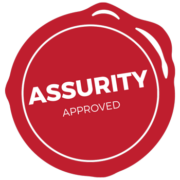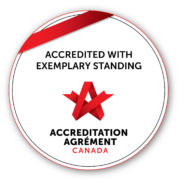Bulletin #8 – Safety Culture – 2

Safety Culture is one of our Accreditation Quality and Safety Themes. It focuses on creating a culture of safety within Menno Place. Within the Safety Culture Theme there are four Required Organizational Practices (ROPs) that must be met to successfully complete Accreditation which will occur October 22 – 25, 2018.
RISK MANAGEMENT
PURPOSE: Menno Place aims to maintaining a continuous quality improvement process to communicate, record, track, monitor, follow-up and prevent incidents of risk that are:
- Unusual or unexpected
- May have an element of risk OR
- May have a negative effect on individuals (residents, volunteers, visitors or staff), groups or all of Menno Place
WHY IS RISK MANAGEMENT IMPORTANT?
- Promote a culture of safety – staff feel comfortable reporting patient safety incidents
- Identify trends and risks, define problem areas and implement corrective action
- Develop strategies to reduce or minimize recurrences
- Reduce legal liability
- Identify staff/resident/volunteer/visitor educational needs
- Continuously improve in all aspects of service delivery
- Improve resident safety by preventing and mitigating unsafe acts
WHAT CONSTITUTES A CULTURE OF SAFETY?
- It is a healthcare approach in which the provision of safe care is a core value of the organization
- The culture encourages and develops the knowledge, skills and commitment of all leaders, management, health care providers, staff, and residents/families for the provision of safe care
- Opportunities to proactively improve the safety of care are constantly identified and acted upon.
- Providers and residents/families are appropriately and adequately supported in the pursuit of safe care.
- The culture encourages learning from adverse events and close calls to strengthen the system, and where appropriate, supports and educates health care providers and residents/families to help prevent similar events in the future.
- There is a shared commitment across the organization to implement improvements and to share the lessons learned.
- Justice is an important element. All are aware of what is expected, and when analyzing adverse events any professional accountability of health care providers is determined fairly. The interests of both clients and providers are protected.
ROP #3 Client Safety Incident Management (Leadership ROP 15.4)
“A patient safety incident management system that supports reporting and learning is implemented”.
Surveyor Question: Are there processes in place to review client safety incidents, recommend actions and monitor improvements?
Answer: Menno Place addresses client safety incidents and takes action to reduce any risk of recurrence.
Evidence: Menno Place encourages everyone to report and learn from client safety incidents including harmful, no-harm and near miss. The reporting system is simple, clear, confidential, and focused on system improvement. Clients and families are also encouraged to report and Menno Place has information on how to report (verbally or written).
The response to client safety incidents include:
- Addressing the urgent care and support needs of those involved
- Contributing factors analyzed and recommended actions identified
- Analysis of similar incidents to look at patterns and trends
- Broadly communicating incident analysis internally and externally in order to build confidence in incident management and promote collective learning
How do we do this?
- All incidents (Non-Reportable & Reportable ) including near misses, involving residents, family members, staff, visitors, volunteers or the building and its systems, are reported to the immediate supervisor
- Incident reports are filled out so that timely reporting can occur
- Residents, designated health care decision makers or primary contacts will be informed as soon as possible. Notification will be documented in the resident chart including who was called
- Serious incidents (Reportable Incidents) are reported to the Care Manager/DOC as soon as the immediate incident/situation has been handled
- All incidents will be reported in writing for investigation and follow up. Investigations include the identification of causative factors and recommendations to reduce the possibility of reoccurrence. A record will be kept of all incidents
- Serious incidents are reported to Fraser Health – Community Care Licensing and to Residential Services by the DOC or designate, in accordance with the Reportable Incidents Policy and FHA. In compliance with the Coroner’s Act, all SUDDEN AND UNEXPECTED DEATHS are immediately reported to the Coroner by telephone by the Nurse in consultation with the RCC/Care Manager/RN Lead/DOC/designate
Types of Reports:
- Incident Report – Falls, Medication error, Near Miss, Injury, Internal (other)
- Reportable Incident Form – submitted to RCC, RN Lead and Care Manager/DOC for follow-up; submitted to Licensing and Residential Services
Follow-Up:
- Nurse/Immediate Supervisor or Manager:
- Assess and respond to incident
- Complete incident report
- RCC/RN Lead/Care Manager/Other Managers:
- Investigation, review, recommendation
- DOC/Executive Director(s):
- Further investigation, recommendation as required
- If appropriate submit to Licensing, EDCS, CEO, QIRM, Board Chair
- Review findings and make necessary changes to systems/procedures/standards in collaboration with Executive Team/CEO
Menno Place Policy: Incident Reporting and Investigation – AP 7.05 (located in Share Point)
Stay tuned:
- Part 3 on Safety culture will be coming out soon.
Adapted from:
The Canadian Patient Safety Dictionary (Available at: http://rcpsc.medical.org/publications/PatientSafetyDictionary_e.pdf)
Effective Governance for Quality and Patient Safety




